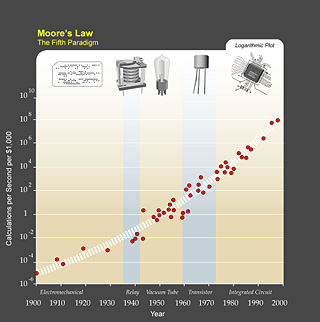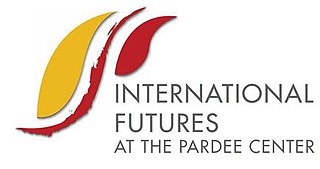
A thought experiment is a hypothetical situation in which a hypothesis, theory, or principle is laid out for the purpose of thinking through its consequences. The concept is also referred to using the German-language term Gedankenexperiment within the work of the physicist Ernst Mach and includes thoughts about what may have occurred if a different course of action were taken. The importance of this ability is that it allows the experimenter to imagine what may occur in the future, as well as the implications of alternate courses of action.
Scenario planning, scenario thinking, scenario analysis, scenario prediction and the scenario method all describe a strategic planning method that some organizations use to make flexible long-term plans. It is in large part an adaptation and generalization of classic methods used by military intelligence.
Morphological analysis or general morphological analysis is a method for exploring possible solutions to a multi-dimensional, non-quantified complex problem. It was developed by Swiss astronomer Fritz Zwicky. General morphology has found use in fields including engineering design, technological forecasting, organizational development and policy analysis.
Futurists are people whose specialty or interest is futurology or the attempt to systematically explore predictions and possibilities about the future and how they can emerge from the present, whether that of human society in particular or of life on Earth in general.
The Natural Step is a non-profit, non-governmental organisation founded in Sweden in 1989 by scientist Karl-Henrik Robèrt. The Natural Step is also used when referring to the partially open source framework it developed. Following publication of the Brundtland Report in 1987, Robèrt developed The Natural Step framework, setting out the system conditions for the sustainability of human activities on Earth; Robèrt's four system conditions are derived from a scientific understanding of universal laws and the aspects of our socio-ecological system, including the laws of gravity, the laws of thermodynamics and a multitude of social studies.

Futures studies, futures research, futurism, or futurology is the systematic, interdisciplinary and holistic study of social/technological advancement, and other environmental trends; often for the purpose of exploring how people will live and work in the future. Predictive techniques, such as forecasting, can be applied, but contemporary futures studies scholars emphasize the importance of systematically exploring alternatives. In general, it can be considered as a branch of the social sciences and an extension to the field of history. Futures studies seeks to understand what is likely to continue and what could plausibly change. Part of the discipline thus seeks a systematic and pattern-based understanding of past and present, and to explore the possibility of future events and trends.
Strategic foresight is a planning-oriented discipline related to futures studies. In a business context, a more action-oriented approach has become well known as corporate foresight.

In futurology, especially in Europe, the term foresight has become widely used to describe activities such as:
Futures techniques used in the multi-disciplinary field of futurology by futurists in Americas and Australasia, and futurology by futurologists in EU, include a diverse range of forecasting methods, including anticipatory thinking, backcasting, simulation, and visioning. Some of the anticipatory methods include, the delphi method, causal layered analysis, environmental scanning, morphological analysis, and scenario planning.

Mark Diesendorf is an Australian academic and environmentalist, known for his work in sustainable development and renewable energy. He currently researches at the University of New South Wales, Australia. He was formerly professor of environmental science and founding director of the Institute for Sustainable Futures at the University of Technology, Sydney and before that a principal research scientist with CSIRO, where he was involved in early research on integrating wind power into electricity grids. His most recent books are The Path to a Sustainable Civilisation (2023) and Sustainable Energy Solutions for Climate Change (2014).

International Futures (IFs) is a global integrated assessment model designed to help with thinking strategically and systematically about key global systems. It is housed at the Frederick S. Pardee Center for International Futures. Initially created by Barry B. Hughes of the Josef Korbel School of International Studies at the University of Denver in Colorado, the model is free for public use in both its online and downloadable forms.
Military capability is defined by the Australian Defence Force as "the ability to achieve a desired effect in a specific operating environment". It is defined by three interdependent factors: combat readiness, sustainable capability and force structure.
Strategic sustainable investing (SSI) is an investment strategy that recognizes and rewards leading companies that are moving society towards sustainability. SSI relies on a consensus-based scientific definition of sustainability, and the assumption that ‘Backcasting from Principles of Sustainability’, whereby a vision of a sustainable future is set as the reference point for developing strategic actions, is the preferred approach to strategically move a company towards sustainability. It was developed by researchers at the Blekinge Institute of Technology in Sweden.
The following outline is provided as an overview of and topical guide to futures studies:
Corporate foresight has been conceptualised by strategic foresight practitioners and academics working and/or studying corporations as a set of practices, a set of capabilities and an ability of a firm. It enables firms to detect discontinuous change early, interpret its consequences for the firm, and inform future courses of action to ensure the long-term survival and success of the company.
Cross-impact analysis is a methodology developed by Theodore Gordon and Olaf Helmer in 1966 to help determine how relationships between events would impact resulting events and reduce uncertainty in the future. The Central Intelligence Agency (CIA) became interested in the methodology in the late 1960s and early 1970s as an analytic technique for predicting how different factors and variables would impact future decisions. In the mid-1970s, futurists began to use the methodology in larger numbers as a means to predict the probability of specific events and determine how related events impacted one another. By 2006, cross-impact analysis matured into a number of related methodologies with uses for businesses and communities as well as futurists and intelligence analysts.
Transition management is a governance approach that aims to facilitate and accelerate sustainability transitions through a participatory process of visioning, learning and experimenting. In its application, transition management seeks to bring together multiple viewpoints and multiple approaches in a 'transition arena'. Participants are invited to structure their shared problems with the current system and develop shared visions and goals which are then tested for practicality through the use of experimentation, learning and reflexivity. The model is often discussed in reference to sustainable development and the possible use of the model as a method for change.
Transition engineering is the professional-engineering discipline that deals with the application of the principles of science to the design, innovation and adaptation of engineered systems that meet the needs of today without compromising the ecological, societal and economic systems on which future generations will depend to meet their own needs. Today safety is an expected consideration in design, operation and end use. Transition Engineering aims for a similar consideration of sustainability. Transition engineering is a trans-disciplinary field that addresses wicked problems while creating opportunities to increase resilience and adaptation through change projects.
Threatcasting is a conceptual framework used to help multidisciplinary groups envision future scenarios. It is also a process that enables systematic planning against threats ten years in the future. Utilizing the threatcasting process, groups explore possible future threats and how to transform the future they desire into reality while avoiding undesired futures. Threatcasting is a continuous, multiple-step process with inputs from social science, technical research, cultural history, economics, trends, expert interviews, and science fiction storytelling. These inputs inform the exploration of potential visions of the future.
Strategic planning and uncertainty intertwine in a realistic framework where companies and organizations are bounded to develop and compete in a world dominated by complexity, ambiguity, and uncertainty in which unpredictable, unstoppable and, sometimes, meaningless circumstances may have a direct impact on the expected outcomes. In this scenario, formal planning systems are criticized by a number of academics, who argue that conventional methods, based on classic analytical tools, fail to shape a strategy that can adjust to the changing market and enhance the competitiveness of each business unit, which is the basic principle of a competitive business strategy. Strategy planning systems are supposed to produce the best approaches to concretize long-term objectives. However, since strategy deals with the upcoming future, the strategic context of an organization will always be uncertain, therefore the first choice an organisation has to make is when to act; acting now or when the uncertainty has been resolved.





